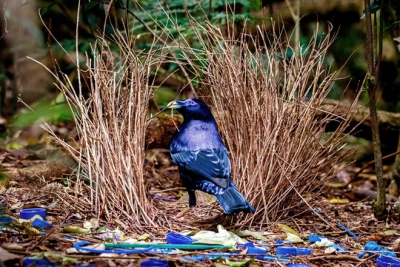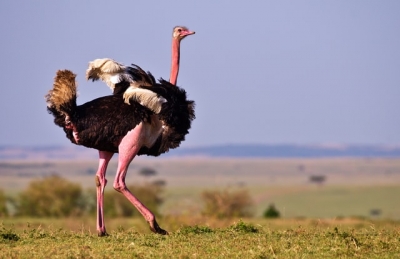
Did you know that bowerbirds are famous for building elaborate structures and even decorating them? Read on to know fascinating facts about the species.
The early European explorers to Australia and New Guinea thought that the elaborate structures they sometimes came across in the forests were built by Aborigines, so artistic and skilled were they. Imagine their surprise when they found that a species of bird was responsible!
The bird is called a bowerbird because of its habit of making complicated 'bowers' or places of courtship to attract and impress the females. The males spend weeks setting up and decorating their bowers. A young male may take several years to perfect the technique.
There are 20 species of bowerbirds of which the satin bowerbird of Australia builds the most elaborate bower. The remarkable structure it builds may reach up to 2.7 m in height. It may consist of a tower of twigs arranged around a central sapling or resemble a miniature house, complete with a door and thatched roof!
Other species clear an area in the forest and set up an 'avenue' or domed tunnel of sticks with just enough space for the bird to enter. Some prepare a lek or display area spread with upturned leaves or 'tiled' with rocks.
Several species give their bowers a coat of paint, using charcoal mixed with saliva or the natural pigment contained in the juice of wild berries. A piece of bark fibre or a tuft of leaves held in the beak serves as a 'paintbrush'. Not content with this, a bowerbird may bring coloured stones, feathers, leaves and flowers to add to the decoration. Iridescent insect skeletons, spider webs and snail shells serve as extra adornment.
Modern-day bowerbirds use discarded buttons, toys, empty tins, coloured straws, broken glass, and even CDs for this purpose! The floor of the bower is often strewn with an enticing bed of soft, fresh leaves.
When the male bowerbird is satisfied with his handiwork, he lures the female inside by calling loudly and when she shows interest, with a dance display. Most male bowerbirds play no part in raising the young. The female lays eggs, which she will incubate by herself. She also cares for the brood on her own.
Quick facts
- There are 20 different bowerbird species, and the males come in colours ranging from green, orange, red, yellow and black to white, olive-brown and sooty grey. Some have a brilliant crest or a ruff. Females are comparatively dull
- Bowerbirds live in tropical forests, mangroves, eucalyptus groves and savanna woodlands.
- They can imitate the calls of other species, as also machines like a chain saw.
- Satin bowerbirds may reuse and refurbish the same bower for more than 30 years.
- Different species go for different colours. The striped gardener bowerbird prefers yellow, red, and blue objects, while the fawn-breasted bowerbird favours green
- Bowerbirds may kill insects solely for the purpose of decorating Competition for females is fierce.
- The birds fight for choicest pieces, steal baubles from each other and tear apart their rivals’ bowers.
- Researchers think that they are the only animal species besides humans to have an aesthetic sense.
Picture Credit : Google

